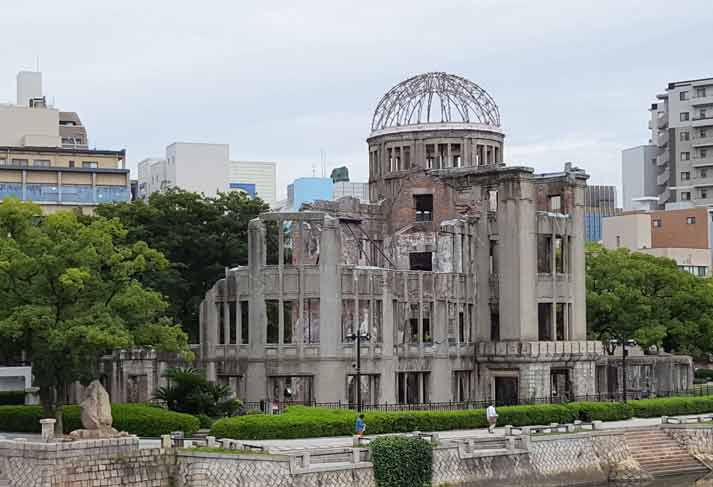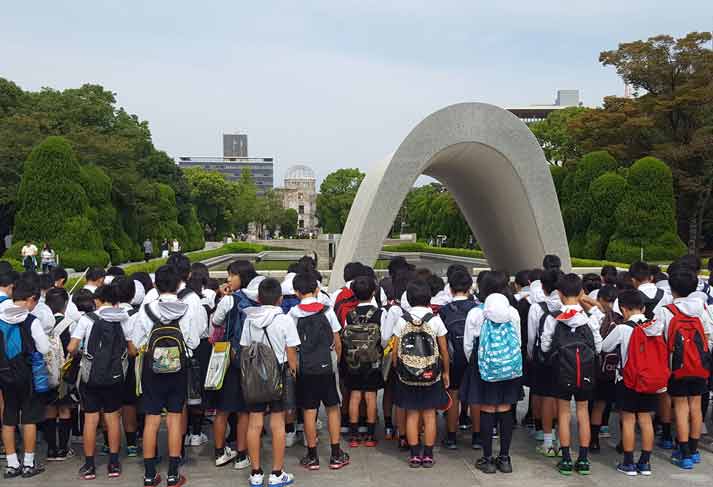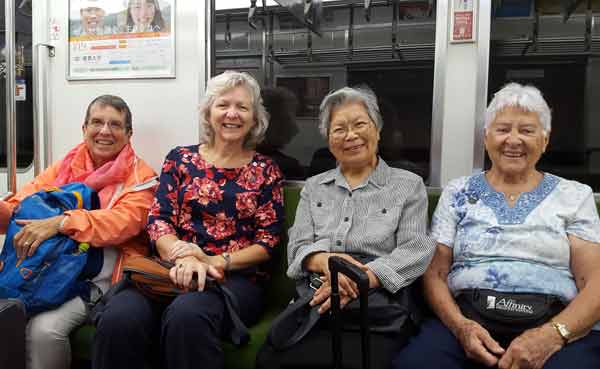Searching for acceptance
 Hiroshima has become a well-known city around the world since World War II. As the site of the atomic bomb in 1945, it holds importance for the Japanese people in particular, especially bomb survivors. Sister Ruth Mori is one of those people. The bomb killed her eldest sister and wounded her parents and younger sister. To help cope with the loss, Sister Ruth has become involved with the Japan Cultural Program, which allows her to share her stories.
Hiroshima has become a well-known city around the world since World War II. As the site of the atomic bomb in 1945, it holds importance for the Japanese people in particular, especially bomb survivors. Sister Ruth Mori is one of those people. The bomb killed her eldest sister and wounded her parents and younger sister. To help cope with the loss, Sister Ruth has become involved with the Japan Cultural Program, which allows her to share her stories.
Sister Ruth Mori became a member of the program in 2014, but has worked with the program since its inception in 1980. She uses the program to educate more than 130 School Sisters of Notre Dame from the United States, Canada, Africa and Honduras. Participants live in Japan for three weeks while learning about SSND life, Japanese culture and visiting historically significant places such as Hiroshima. Sister Ruth uses this opportunity to share her own experiences.
“As a member of the Japan Cultural Program, I had to share my family’s experience of the Atomic bomb with the participant sisters,” she said. “Every time I spoke with many tears. They were not from anger. My tears were from the deep sorrow in me. I came to realize that I was looking for the meaning of [the] deaths of all these people by [the atomic] bomb.”
 In the spring of 1945, Sister Ruth’s father relocated to Hiroshima. He lived on the edge of Hiroshima City with her mother and two sisters. Sister Ruth – who was ten years old at the time – and her brother lived with their grandparents at a village three hours away from Hiroshima City, to avoid the war’s impact. She remembers being dismissed from class after the bomb hit, and saw the big mushroom cloud in the sky and rubbish falling down. She was unaware of how the bomb had impacted her family.
In the spring of 1945, Sister Ruth’s father relocated to Hiroshima. He lived on the edge of Hiroshima City with her mother and two sisters. Sister Ruth – who was ten years old at the time – and her brother lived with their grandparents at a village three hours away from Hiroshima City, to avoid the war’s impact. She remembers being dismissed from class after the bomb hit, and saw the big mushroom cloud in the sky and rubbish falling down. She was unaware of how the bomb had impacted her family.
Sister Ruth’s oldest sister was working outside with other high school students when the bomb hit. Every high school student in the area was either burned or killed. Her body was never recovered.
Sister Ruth’s father was in a government office building near ground zero. After the bomb, he found himself walking far from his office while holding his broken arm, having no idea how he got there. Later, he would recall two colleagues, who sat on the window-side of the same room, had died during the explosion. Her father was able to rescue his neighbor, who sat next to him.
At home, Sister Ruth’s mother – who was pregnant – was injured by broken glass when the bomb fell. She died five years later. To this day, they do not know how much of a role the bomb played in her subsequent health issues or in the cause of her death.
 Sadly, Sister Ruth’s four-year-old sister was playing outside at the time of the explosion. Although she was able to come home by herself, half of her body was severely burned. Daily trips to the hospital did nothing to halt the growth of maggots within her wounds, and the infestation resulted in the formation of keloids.
Sadly, Sister Ruth’s four-year-old sister was playing outside at the time of the explosion. Although she was able to come home by herself, half of her body was severely burned. Daily trips to the hospital did nothing to halt the growth of maggots within her wounds, and the infestation resulted in the formation of keloids.
In December 1945, Sister Ruth’s mother gave birth to a baby girl, who is the youngest generation of atomic bomb survivors. Since the age of 25, she has been committed to bringing about a peaceful world without nuclear weapons. She has shared her family’s experiences from adult to elementary school audiences.
Around 2014, Sister Ruth’s trips to Hiroshima – as part of the Japan Cultural Program – began to bring peace, partly through her own explorations of key places to her family’s experience, such as visiting the location of her father’s office. Primarily, though, healing has come through the kindness extended by those who have taken part in the Japan Cultural Program, other SSNDs and friends.
“I have taken many Americans and sisters to Hiroshima,” she said. “In their attitude of kindness, I have felt that my image of Hiroshima has changed and my journey to search for the meaning of the deaths of the people by the A- bomb was terminated.”